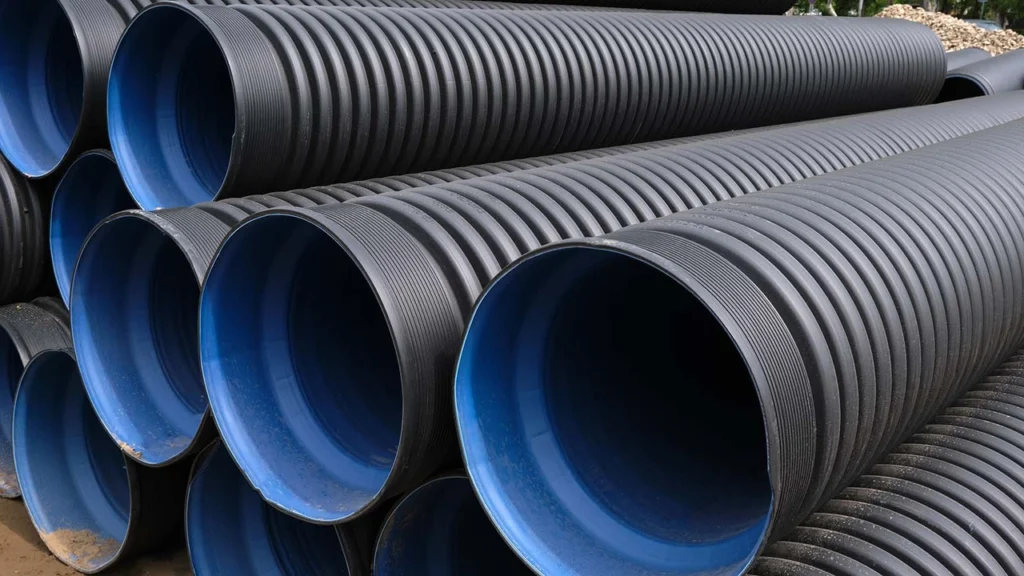Polyethylene Water Pipes: A Comprehensive Guide to Benefits, Applications, and Installation
Polyethylene water pipes have become increasingly popular in modern infrastructure, thanks to their durability, flexibility, and cost-efficiency. Whether used in residential, commercial, or industrial settings, these pipes are an essential component of many water distribution systems. This article provides an in-depth exploration of polyethylene water pipes, including their benefits, applications, installation processes, and maintenance tips.
What Are Polyethylene Water Pipes?
Polyethylene (PE) water pipes are made from a versatile plastic material known for its strength, lightweight properties, and resistance to chemicals and corrosion. The most common types of polyethylene used in piping systems are high-density polyethylene (HDPE) and cross-linked polyethylene (PEX).
HDPE pipes are particularly popular in water supply systems due to their ability to handle high pressure and their resistance to environmental stress. PEX pipes, on the other hand, are widely used in residential plumbing because of their flexibility and ease of installation.
Benefits of Polyethylene Water Pipes
1. Durability and Longevity
Polyethylene water pipes are built to last. They are resistant to cracking, abrasion, and corrosion, making them ideal for long-term use. These pipes can often withstand up to 50 years or more of service life under normal conditions.
2. Flexibility and Adaptability
Polyethylene pipes can bend without breaking, allowing them to navigate around obstacles and adjust to ground movement. This flexibility reduces the need for additional fittings and makes them ideal for earthquake-prone areas.
3. Leak-Resistant Connections
With heat-fusion or mechanical joints, polyethylene pipes create virtually leak-free systems. This feature reduces water loss and prevents contamination of potable water supplies.
4. Cost-Effectiveness
The lightweight nature of polyethylene pipes reduces transportation and installation costs. Furthermore, their low maintenance requirements make them a cost-effective solution over the long term.
5. Environmental Benefits
Polyethylene is a recyclable material, contributing to its sustainability. The production process also has a lower environmental impact compared to traditional materials like PVC or metal.
Applications of Polyethylene Water Pipes
1. Residential Plumbing
In homes, PEX pipes are commonly used for delivering potable water due to their resistance to freezing and bursting. They are also ideal for radiant floor heating systems.
2. Municipal Water Supply Systems
HDPE pipes are widely used in municipal water distribution networks because of their ability to handle high pressure and their resistance to environmental factors such as UV radiation and soil chemicals.
3. Agriculture and Irrigation
Polyethylene pipes are a staple in agricultural settings for irrigation and water distribution. Their flexibility and ease of installation make them ideal for rural and remote areas.
4. Industrial Applications
Industries use HDPE pipes for transporting water and chemicals due to their high resistance to corrosive substances and pressure.
5. Stormwater and Drainage Systems
Polyethylene pipes are also utilized in managing stormwater runoff and drainage. Their smooth interior walls ensure efficient water flow.
Installation Process
1. Planning and Design
Start with a detailed layout of the piping system. Ensure that the design accommodates the pipe’s flexibility and minimizes the need for joints and fittings.
2. Preparation
Clear the installation area of debris and ensure a stable surface for laying the pipes. Verify that all required tools and materials are on-site.
3. Joining Methods
- Heat Fusion: A process where pipe ends are heated and fused together to form a strong, leak-proof joint.
- Mechanical Fittings: Common in residential applications, these are quick and easy to install.
4. Installation
Place the pipes in the designated area, avoiding excessive bending or stress. Ensure proper alignment to reduce strain on joints.
5. Testing
Conduct pressure tests to confirm the system’s integrity before backfilling trenches or completing the installation.
Maintenance Tips
1. Regular Inspections
Periodically inspect the pipes for signs of wear, leaks, or damage. Early detection can prevent costly repairs.
2. Cleaning
Flush the system periodically to remove sediment or buildup that could reduce efficiency.
3. Repairing Damage
Minor leaks or damages can be repaired using approved methods, such as patching or replacing the affected section.
Conclusion
Polyethylene water pipes are a reliable, versatile, and eco-friendly choice for modern water distribution systems. Whether for residential, agricultural, or industrial applications, these pipes offer unmatched durability, flexibility, and efficiency. Proper installation and maintenance ensure their longevity, making them a sound investment for a sustainable future.
If you’re considering polyethylene water pipes for your project, consult with a professional to ensure you choose the right type and follow best practices for installation. Embrace the advantages of this innovative material and enjoy a worry-free water supply system for years to come.
Our company is a supplier of various types of polyethylene pipes in the Middle East. You can contact us for more information.

